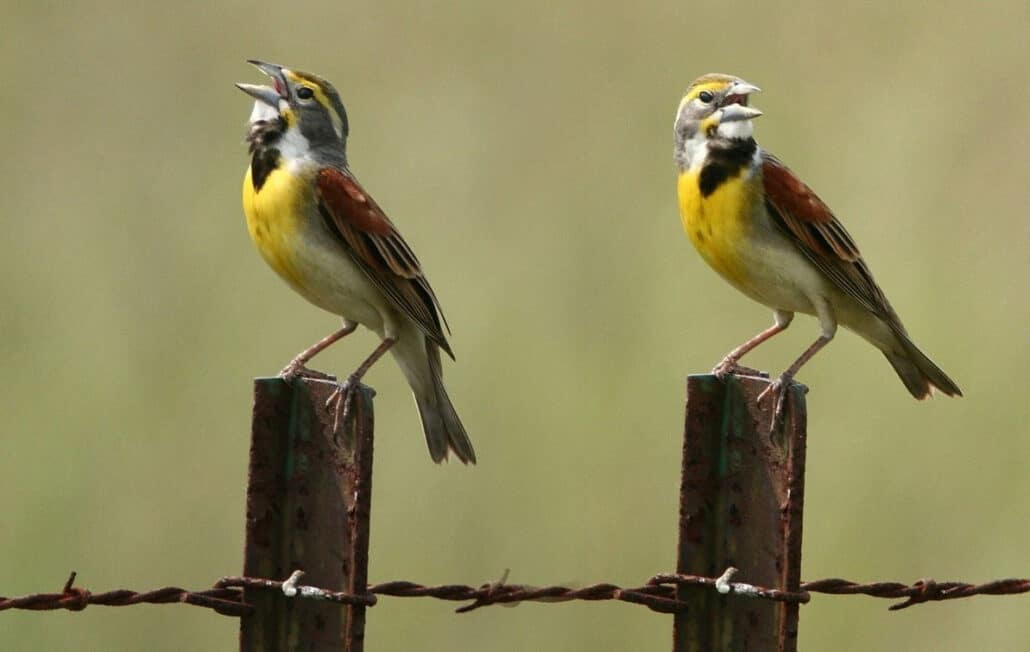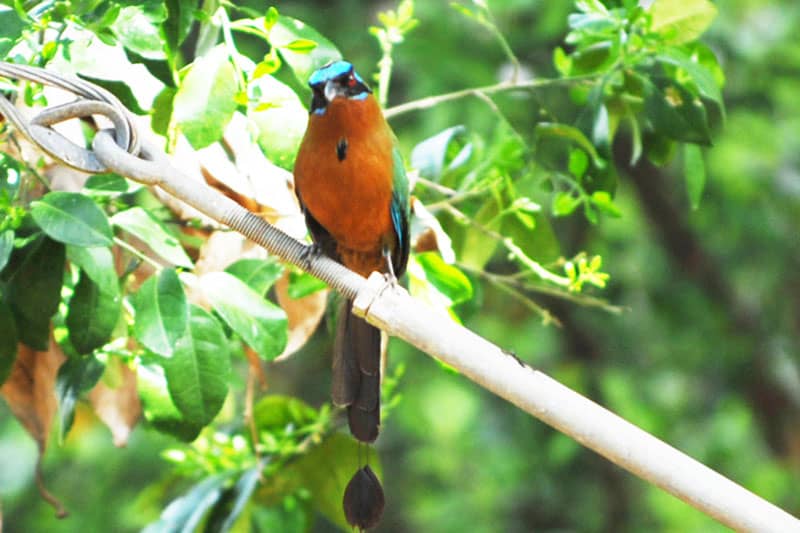When asked to characterize Louisiana coastal zone birding opportunities most locals would begin with a mention of “the biomass effect.” The region possesses a fantastic degree of bird diversity—more than 90 percent of Louisiana’s approximately 460 bird species have been recorded within the coastal zone.
The most outstanding of the coastal zone’s bird-related phenomena, however, involves the sheer numbers of individuals, especially within appropriate habitat and season. During the winter months, flocks of up to 100,000 geese—snow/blue, Ross’s, greater white-fronted, and a few cackling geese—are not difficult to find. In certain locales, commuting flocks of 10,000 or more ibis—mostly white-faced, with some glossy and white—are common daily sights during the winter months as well.
During the summer, four-hour morning counts producing thousands of birds are “expected” in appropriate habitats—herons, egrets, ibises and other wading birds, along with 25-80 individuals apiece of great-crested flycatcher, Acadian flycatcher, red-bellied and downy woodpeckers, white-eyed vireo, red-eyed vireo, prothonotary warbler, yellow-breasted chat, painted and indigo buntings and other neotropical breeders abound. It is essential that visiting birders learn the various habitats, locations, and seasonal events inherent to the region in order to witness the biomass effect at its best.
Geologically, Louisiana’s coastal zone is evenly divided into the older (Pleistocene; 100,000 – 7,000 years old) Chenier Plain to the west, and the younger (Holocene; 5,000 years old or less) Mississippi River Deltaic Plain to the east. Generally, both halves possess similar habitat types, but there are a few important exceptions. Listed below are the major habitat types along with bird activity associated with each.
Marshlands
Marshlands comprise 13 percent of Louisiana’s total landmass, the bulk of which—more than 3 million acres—occur within the coastal zone. With seawater salinity averaging about 35 parts-per-thousand (ppt), coastal zone marshes are classified according to water salinity, with freshwater marshes (0.5–1.0ppt) being the most common type, followed in decreasing order by brackish (8ppt), intermediate (3–10ppt), and salt 16ppt).
Freshwater marshes occur in huge swaths across most all of the coastal zone, and possess the most diverse plant and animal communities. On the other end of the spectrum, salt marshes occur in small pockets (most numerous on the Deltaic Plain), and possess the least diverse—and most site-specific—animal and plant communities.
Salt marsh habitat is the only type to consider when looking for the year-round-resident clapper rail and seaside sparrow, for example; and the best habitat type to look for short-billed dowitcher and Nelson’s sharp-tailed sparrow during fall and winter.
Also during fall, winter, and spring, all marsh types hold diverse communities of wading birds, waterfowl, raptors, shorebirds, wrens, and sparrows.
Beaches and Barrier Islands
Beaches line most all of the coastal zone’s Gulf of Mexico shoreline. Barrier islands represent old/abandoned beachfronts, and are confined to the eastern Deltaic Plain within the Louisiana coastal zone. These sandy habitats serve as rookery grounds for Louisiana’s most site-specific wading birds, gulls, terns, and plovers, including reddish egret, royal, sandwich, gull-billed, and least terns, and Wilson’s plover, willet, and American oystercatcher.
During fall, winter, and spring these sandy habitats crowd up with many more seabird and shorebird species, including specialties such as lesser black-backed gull and red knot. Other rare-but-regular beach/barrier island specialties include great black-backed and California gulls, black-legged kittiwake, and pomarine jaeger.
Louisiana’s largest barrier island, Grand Isle, is human-inhabited and fully accessible by car. Grand Isle supports numerous motels and fine seafood restaurants, as well as easily accessible stretches of beach, salt marsh, wet meadow, and maritime forest habitats.
Closely associated with beaches and barrier islands are back-beach dune woodlands comprised of scrub-shrub, mangrove swamp, or full-blown maritime forests, depending on location and relative elevation. More often than not, these leafy habitats hold some of the coastal zone’s best songbirds, especially during spring and fall migration.
Swamps
Swamps are permanently flooded forests composed mainly of baldcypress, tupelo gum, and swamp red maple trees. Swamps occur in pockets throughout much of the region, but the biggest is the 1-million-acre Atchafalaya Basin, located dead-center in the coastal zone and easily accessible from numerous locations. Expectedly, these swamps hold large numbers of water birds including all manner of herons, egrets, ibises, plus roseate spoonbills, and wood storks during the summer months.
Wood ducks, hooded mergansers, and black-bellied whistling ducks all nest here in good numbers in spring and early summer. Southern bald eagles nest throughout these swamps in substantial numbers during the winter months. Coastal zone swamps also hold breeding populations of swallow-tailed kites, one of the region’s most sought-after birds.
Bottomland Hardwood Forests
Bottomland hardwood forests are located within the floodplains of the region’s many rivers and bayous. Expansive, easily accessible swaths of bottomland hardwoods flank the mighty Atchafalaya Basin. Seasonally flooded, and permanently laced through with streams and back swamps, these bottomland hardwoods are tall, closed-canopy forests of oak, ash, sweetgum, elm, and maple.
Due to frequent flooding, the dimly-lit forest floor is only sparsely populated with shrubs—mostly dwarf palmetto— but densely covered in ferns and other herbaceous plants. The vine community here is diverse and abundantly distributed, consisting of at least 15 woody species, the berries of which are essential food resources for migrating and wintering birds.
Bottomland hardwood forests associated with the Atchafalaya Basin annually hold the densest concentrations of nesting neotropical songbirds in Louisiana, and possibly the entire United States. During May and June in particular, the combined dawn chorus of flycatchers, woodpeckers, vireos, wrens, warblers, tanagers, and buntings is one of the most amazing avian phenomena on the North American continent. Bring your recorders!
Battures (pronounced “bat-YERS”) are modified bottomland hardwood forests, located inside of the natural and artificial levees of rivers and bayous, where sandbars are normally located. In fact, battures are actually forested sandbars, vegetated with boxelder, water elm, swamp privet, black willow, and other small, water-loving trees. During the winter months, battures host all manner of nearctic songbirds, including lingering Baltimore orioles, and the increasingly rare rusty blackbird, which sweeps through these habitats in small foraging flocks.
One of the finest battures in all of the coastal zone is actually human-inhabited—the community of Butte La Rose (exit 121 on Interstate-10)—with every backyard filled with the songs of myriad nesting wood ducks, ruby-throated hummers, and prothonotary warblers. As with most coastal zone communities, the folks at Butte La Rose are friendly, open, and welcoming. Drop by for a visit.
Maritime Forests
Maritime forests are live oak-dominated woodlands located within earshot of the Gulf of Mexico’s rolling surf. These tough, salt-sprayed woodlands developed atop ancient beach ridges, Native American shell middens, at the mouths of natural and artificial waterways—any site possessing enough elevation for woody vegetation to gain a foothold.
As the nearest truly sheltered stopover habitats encountered by trans-Gulf-migrating neotropical songbirds, these thin bands of maritime forests serve a crucial role in providing food, water, and resting-shelter for the bulk of eastern North America’s migratory flycatchers, vireos, thrushes, warblers, tanagers, orioles, buntings, and sparrows—particularly during the frequent periods of inclement weather that occur during the spring.
Today, precious few pockets of this crucial habitat remain, widely scattered through the coastal zone. Unfortunately, maritime forest habitats are among the most vulnerable to tidal surges associated with hurricanes. With the recent passages of “mega-storms” such as hurricanes Katrina, Rita, and Ike with their accompanying 12-15′ walls of seawater, maritime forests of Louisiana’s coastal zone are presently hanging on by a thread.
Coastal Flatwoods
Along the northern shore of Lake Ponchartrain is a belt of coastal flatwoods, a pine-dominated version of maritime forest more common to the gulf-coastal zones in neighboring Mississippi, Alabama, and the Florida panhandle. Indeed, in centuries past, the northern shore of Lake Ponchartrain represented the southernmost extent of the Louisiana coast as well. With its scattered colonies of longleaf pine, Lake Ponchartrain’s north-shore forest is the only place in the coastal zone where the endangered red-cockaded woodpecker can be found.
Coastal Tallgrass Prairie
Coastal tallgrass prairie habitat once occupied a 2.5-million-acre triangular area in the southwestern corner of Louisiana. Today, cattle ranching and rice/crawfish and sugarcane farming have largely replaced this native grassland habitat. Several already-rare animal species—Attwater’s prairie chicken, prairie vole, red wolf—were extirpated in the process. The good news is that rice/crawfish production in particular has created a new array of dependable niches for a wide array of bird groups.
During the winter months, most harvested rice fields remain flooded to varying degrees. Some rice farmers purposely flood their harvested rice to produce crawfish during the winter and spring months. Toward the end of spring, fields are drained, seeded with rice, and then re-flooded for the summer. By late summer, the fields are drained once again for harvest. Throughout the annual rice/crawfish growing process, then, fields are alternately drained and filled with 1–20″ of water, depending on rainfall and agricultural phase.
Each season and agricultural phase in rice country serves its own suite of birds. Generally, wading birds such as herons, egrets, ibis, and roseate spoonbill can be found in large numbers on a year-round basis. Around 20 species of shorebirds use the fields during spring and fall migration and through the winter.
Many species of raptors, ducks, geese, cormorants, pelicans, rails, gulls, terns, and numerous others densely occupy the fields from November–March. The rice country also contains many miles of shaggy hedgerows, overgrown irrigation canals, riparian forests, and woodlots that prove attractive to a large community of songbirds including flycatchers, vireos, wrens, warblers, sparrows, and blackbirds of many species.
Many local bird watchers—particularly those who are most interested in waterfowl, raptors, and shorebirds—work the rice country more diligently than any other habitat type within the coastal zone. Consequently, many rarities have been discovered in this part of the coastal zone, including Harris’s hawk, ferruginous hawk, golden eagle, ruff, Say’s phoebe, mountain bluebird, as well as super-rarities such as brant, black-tailed godwit, curlew sandpiper, fork-tailed flycatcher, and northern wheatear.
During the past few decades, more and more southwestern U.S. birds have been finding their way into the rice country on a regular basis. Northern caracara and Swainson’s hawk now nest there in small numbers. Black-bellied whistling duck, white-winged dove, and Inca dove are now widespread breeding birds. Each winter, cinnamon teal, ash-throated flycatcher, and vermilion flycatcher are becoming increasingly easier to find. For the past decade, great kiskadees have made several nesting attempts.




